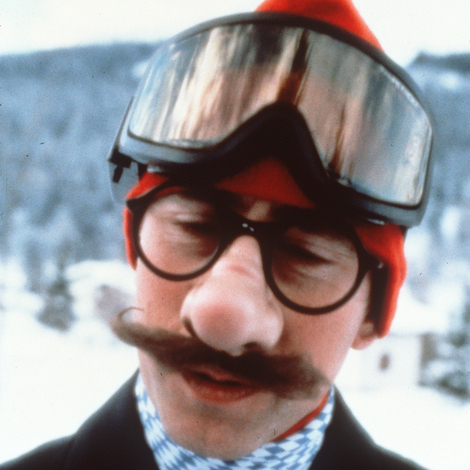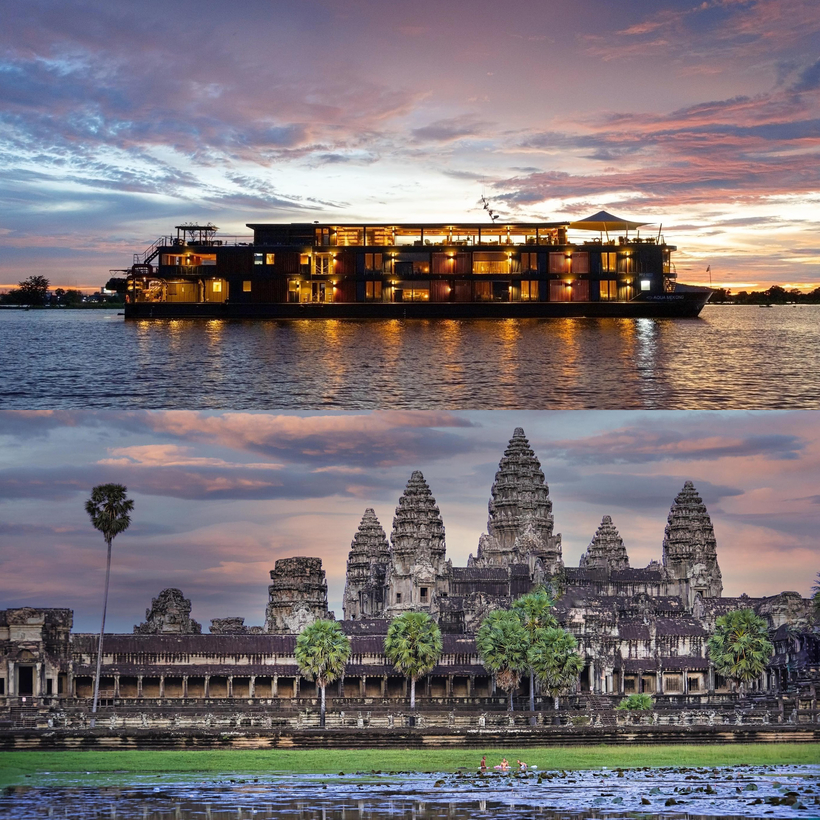A large map on the wall inside of the old French post office in Ho Chi Minh City, formerly known as Saigon, reveals the original blueprint for one of the most spectacular river trips in the world: a cruise on the Mekong, which drains the former French colony of Indochina—now comprising Vietnam, Cambodia, and Laos.
The Mekong is the economic and spiritual spine of Southeast Asia as well as the aquatic highway to Angkor Wat, the 400-acre temple complex near Siem Reap, Cambodia. Built during the 12th century by King Suryavarman II of the Khmer Empire, it is the world’s largest religious structure.

I first discovered Angkor Wat was when I was eight years old and saw photos of Jackie Kennedy touring it in Life magazine. She was wearing a lime-green tunic and white trousers, walking through the ruins under a silk umbrella alongside Prince Norodom Sihanouk.
Fraught with glamour, sensuality, history, and adventure, the Mekong Delta became a place I dreamed of going. So it was with great anticipation that I arrived in Ho Chi Minh City for a four-day cruise aboard the Aqua Mekong, a 205-foot, Vietnamese-built ship with 20 spacious teak-floored cabins, attended by a crew of 40.

Our meeting point was the lobby lounge of a garish five-star hotel, and as my fellow passengers arrived, I initially felt like I was sitting in on a casting call for the fourth season of The White Lotus. They were visibly but not ostentatiously affluent—and impressively fit. Suddenly, it seemed likely that the boat’s bicycles and kayaks might actually get some use.
Australian David Thompson, whose London restaurant Nahm was the first to win a Michelin star for Thai cooking, is the ship’s consulting chef. Our first meal of delicious Vietnamese dishes, including steamed grouper with yellow beans and ginger, started things off on a high note.

My comfortable cabin’s centerpiece was a daybed in front of a large picture window. (It’s a better option than the suites with private balconies, which are too hot during the day and gnat-and-mosquito-ridden later on.) We passed people bathing on the muddy riverbanks, as well as several ferries filled with children in school uniforms.
I’d just spotted a pair of dolphins lazily nosing out of the water when one of the guides greeted me with a mug of tea. I may have overwhelmed him with questions about the health of the Mekong, but he answered in great detail. Yes, he admitted, its nutrient-rich waters were being threatened by rising sea levels and Chinese-built dams, which produce hydroelectric power further upstream. Salt water was advancing further into the Mekong Delta, impacting fish, shellfish, and agriculture. Increased salt deposits in the soil harmed yields of tropical fruit and, most of all, rice.

“It’s a disaster, and we have no power to do anything about it,” said the guide. Then he clapped me on the back. “But it’s going to be a beautiful day!”
For now, the Mekong teems with life. Most of the tilapia used in fast-food fish sandwiches in the U.S. comes from the floating farms here. It’s also the main source of water for millions and a vital link to transit systems in Vietnam, Cambodia, and Laos.
Ever since I read The Lover, by the French writer Marguerite Duras, while working as a 15-year-old page in the Weston, Connecticut, public library, I’d dreamed of visiting Sa Dec, the riverside town where Duras had grown up. There, she broke several taboos by becoming the 15-year-old girlfriend to the married son of a wealthy Chinese landowner.

Stepping ashore from one of the aluminum skiffs that ferried us to moorings, I trailed the ship’s chef through the canal-side market as he bought a mound of emerald-green river cress, a fistful of lemongrass, and wriggling freshwater prawns.
The two coconuts he selected were deconstructed by a machete and a lethal-looking box grater into a bag of shredded coconut and a glass bottle of its milk. On my way out, I saw an old woman with a nearly toothless smile squatting in front of a pile of mangoes, which were memorably enjoyed by the couple in Duras’s book.
She cut one open and offered me a slice at the end of her long knife. I bought a few to leave on the Buddhist altar at the Lover’s House. Today, it’s a tourist attraction, but it was once the home of the prosperous Chinese-merchant family that Duras had infiltrated.

For all of the wonderful visits to farms, villages, temples, and acrobatic and dance performances, I most enjoyed those quiet hours on the ship observing life on the Mekong. (The Aqua Mekong also has a spa, small plunge pool, gym, home cinema, and game room.)
The night before we reached Phnom Penh, our final destination, one of the guides gave a captivating lecture about Khmer civilization and the history of Angkor Wat, since most of the passengers were continuing on to Siem Reap to see the celebrated temples. The lecturer briefly struck a shoal with a reference to the “American war.” A hand went up and waved insistently.
“What was the American war?”
“I believe you call it the Vietnam War,” he replied crisply, and resumed his talk.

When I opened the curtains of my picture window the next morning, I was astonished to see that the sleepy, low-rise Phnom Penh, a city the French once called the “pearl of Asia” for its beauty, had sprouted a forest of glass-clad skyscrapers. They were mostly empty, I learned, and built as investment properties for wealthy Chinese who wanted to move money out of the country.
Here, on the Mekong, the past and the future both have a fascinating way of infiltrating the present. And what a thing to watch.
Alexander Lobrano is a Writer at Large at AIR MAIL. His latest book is the gastronomic coming-of-age story My Place at the Table: A Recipe for a Delicious Life in Paris


